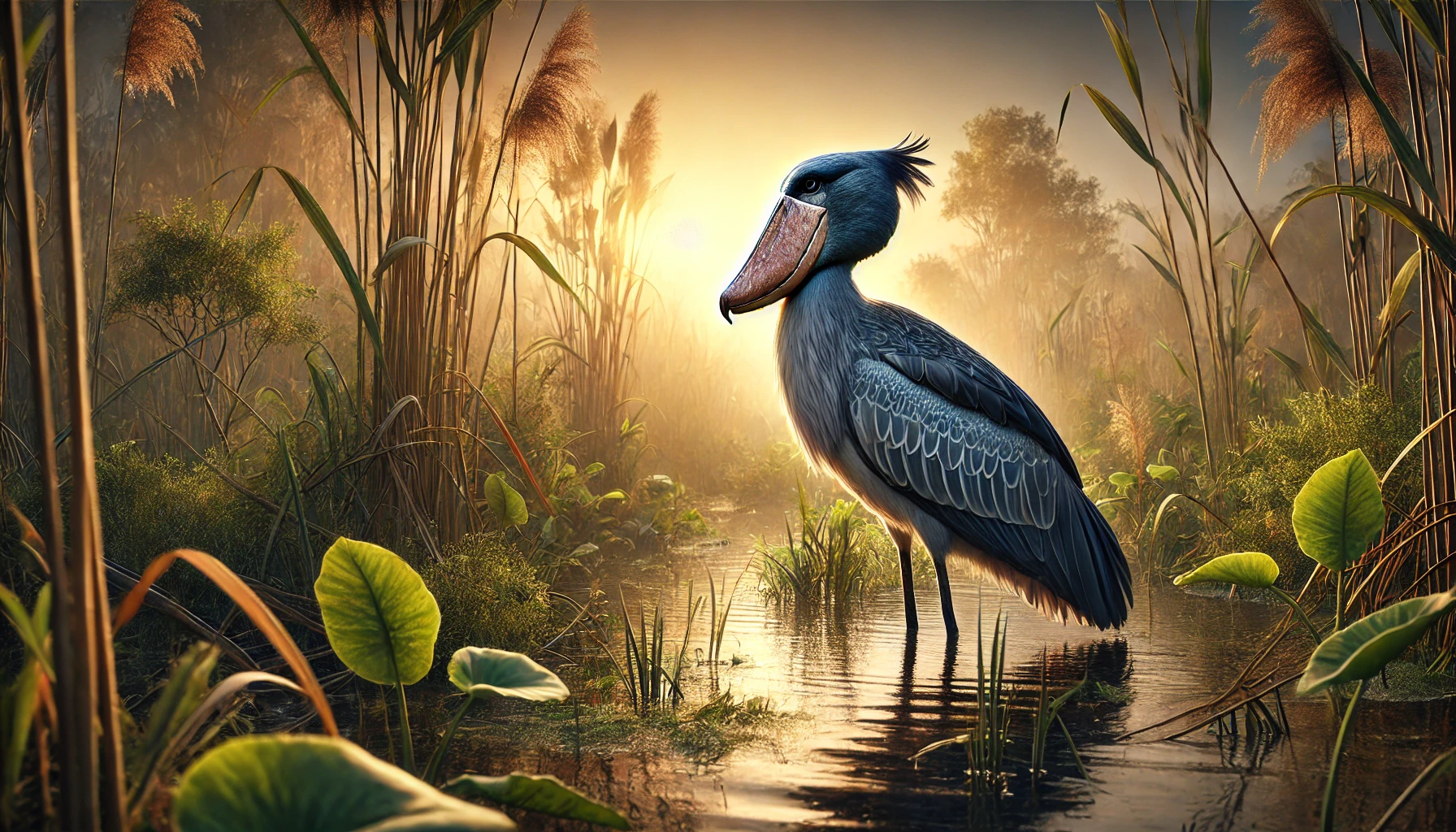The shoebill stork, also known as the whale-headed stork, is one of nature’s most fascinating and unusual birds. Native to the swamps of East Africa, this large bird is instantly recognizable due to its massive, shoe-shaped bill and prehistoric appearance. Often described as both majestic and eerie, the shoebill stork is a true testament to the diversity and wonder of the avian world. Despite its intimidating look, the shoebill has a surprisingly serene demeanor, making it a captivating subject for bird enthusiasts and researchers alike.
Shoebill Stork Facts

Fact 1: Prehistoric Features
At first glance, the shoebill stork looks like something out of the age of dinosaurs. Standing at an impressive height of 4 to 5 feet, with a wingspan that can reach up to 8 feet, this bird dominates its swampy habitat. The most striking feature, however, is its enormous bill, which measures about 7.5 to 9.5 inches in length. Shaped like a clog, this bill isn’t just for show—it’s a powerful tool perfectly adapted for its hunting needs.
The shoebill’s plumage is primarily slate gray, with broad wings and a somewhat ragged appearance. Its large eyes and piercing gaze add to its prehistoric vibe, often leaving onlookers mesmerized. While its appearance might suggest aggression, the shoebill is typically calm and deliberate, moving with slow, measured steps as it stalks its prey.
Fact 2: The Shoebill is Patient Hunter
The shoebill’s hunting strategy is a perfect example of patience and precision. Preferring swampy wetlands and shallow waters, the bird silently waits for its prey, often standing motionless for hours. This technique, known as “still hunting,” allows the shoebill to blend seamlessly into its surroundings and ambush unsuspecting prey.
Its diet consists primarily of fish, with a preference for large lungfish, tilapia, and even eels. However, the shoebill isn’t picky and has been known to eat frogs, water snakes, and even baby crocodiles. When the moment strikes, the shoebill’s bill snaps shut with lightning speed and incredible force, ensuring its prey has little chance of escape. After capturing its meal, the bird performs a characteristic “head shake,” using its bill to remove excess water and vegetation before swallowing its catch whole.
Fact 3: No, It Doesn’t Carry a Machine Gun
While many large birds are known for their calls or songs, the shoebill has a distinctive way of communicating that’s equally fascinating. One of its most notable sounds is a loud, clattering noise made by rapidly opening and closing its bill. This sound, often compared to the rattle of a machine gun, is used during courtship displays or as a means of signaling to other shoebills.
Despite its size and formidable appearance, the shoebill’s vocalizations are surprisingly soft. It produces low, guttural coos and grunts, especially when interacting with its chicks. These softer sounds highlight the bird’s more nurturing side, contrasting with its otherwise imposing image.
Fact 4: The Shoebill Stork is Vulnerable
The shoebill stork is classified as vulnerable by the International Union for Conservation of Nature (IUCN), with an estimated population of fewer than 10,000 individuals in the wild. The primary threats to its survival include habitat loss, human disturbance, and hunting. Swamps and wetlands, essential to the shoebill’s way of life, are often drained for agriculture or development, reducing the bird’s hunting grounds.
Efforts are underway to protect the shoebill and its habitat. Conservation groups are working to raise awareness about the importance of preserving wetlands and minimizing human interference in these ecosystems. Additionally, eco-tourism initiatives are helping generate funds for conservation while promoting appreciation for this remarkable bird.
The shoebill stork is a bird like no other, embodying a sense of mystery and wonder that few animals can match. With its prehistoric appearance, masterful hunting skills, and unique behaviors, the shoebill offers a glimpse into the incredible adaptability of life on Earth. As we learn more about this fascinating species, we’re reminded of the importance of protecting the delicate ecosystems that support such extraordinary creatures.

